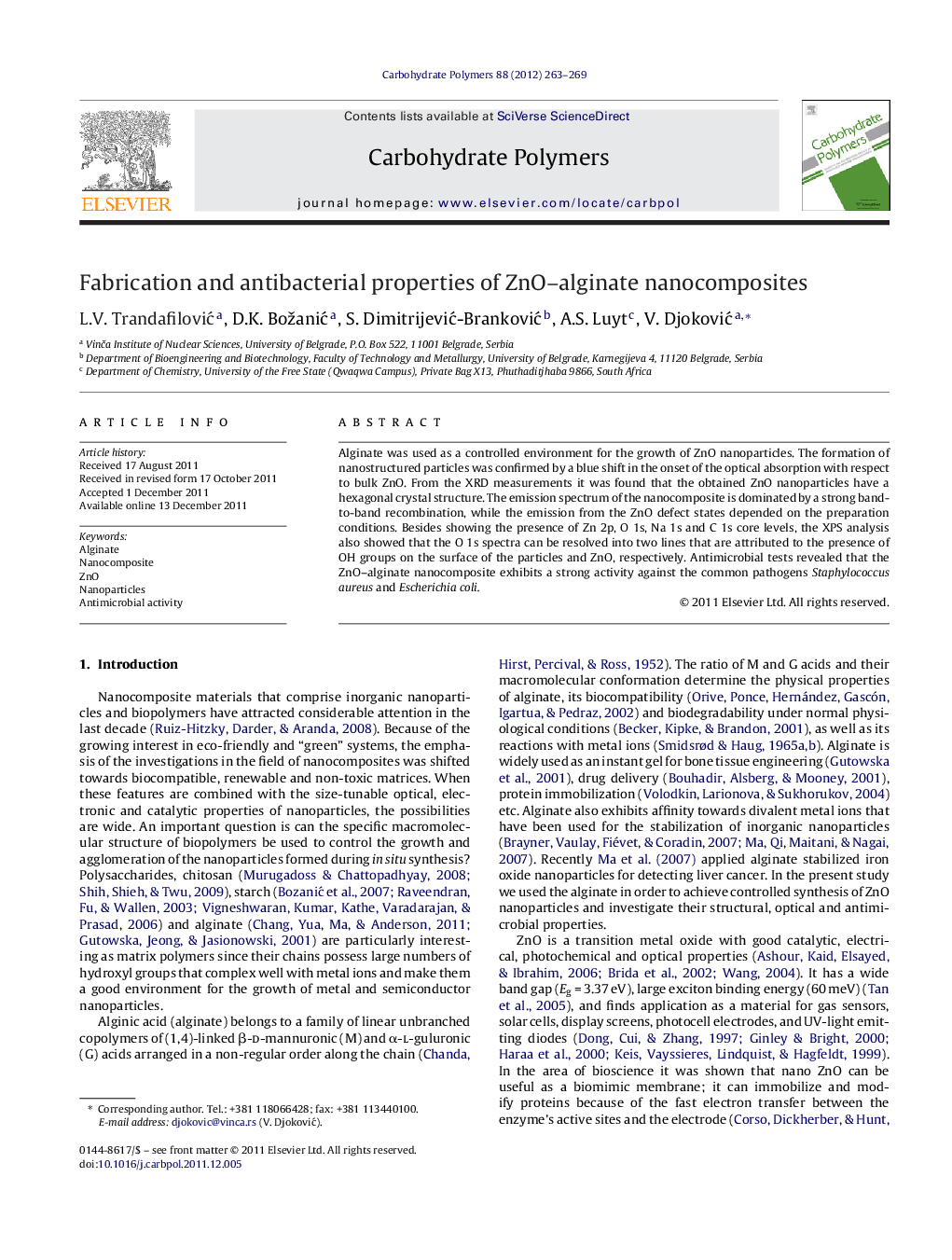| Article ID | Journal | Published Year | Pages | File Type |
|---|---|---|---|---|
| 1384961 | Carbohydrate Polymers | 2012 | 7 Pages |
Alginate was used as a controlled environment for the growth of ZnO nanoparticles. The formation of nanostructured particles was confirmed by a blue shift in the onset of the optical absorption with respect to bulk ZnO. From the XRD measurements it was found that the obtained ZnO nanoparticles have a hexagonal crystal structure. The emission spectrum of the nanocomposite is dominated by a strong band-to-band recombination, while the emission from the ZnO defect states depended on the preparation conditions. Besides showing the presence of Zn 2p, O 1s, Na 1s and C 1s core levels, the XPS analysis also showed that the O 1s spectra can be resolved into two lines that are attributed to the presence of OH groups on the surface of the particles and ZnO, respectively. Antimicrobial tests revealed that the ZnO–alginate nanocomposite exhibits a strong activity against the common pathogens Staphylococcus aureus and Escherichia coli.
► Alginate biopolymer is used as controlled environment for preparation of ZnO nanoparticles. ► A novel synthetic procedure is introduced for preparation of ZnO–alginate nanocomposites. ► The obtained ZnO–alginate nanocomposites exhibit strong antimicrobial activity. ► The antimicrobial activity was found to depend slightly on the preparation conditions. ► XPS spectroscopy was used to study the defects on the surface of ZnO nanoparticles.
